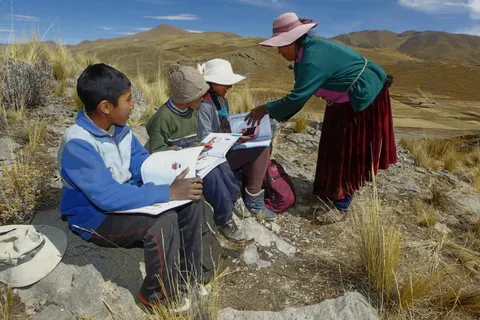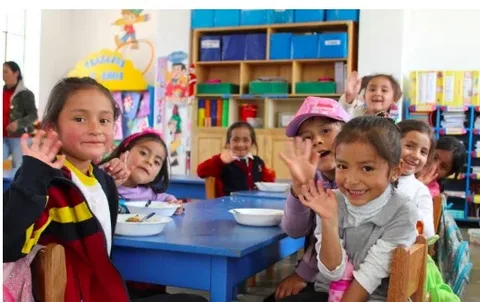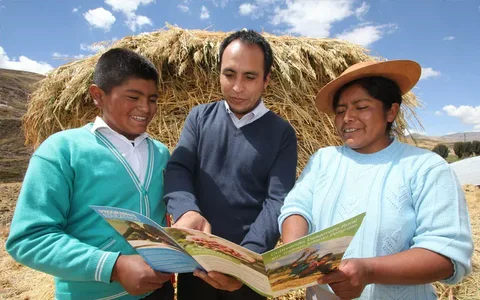Cambio y Adaptacion en la Educacion en el Peru Durante la Pandemia
What was the impact on education in Peru in the wake of the pandemic? How did teachers, students, and parents adjust to the sudden change? Let’s discuss the challenges and changes that came along with it.
Outline
- How the Pandemic Changed Education in Peru
- Key Adaptations in Schools and Universities
- Challenges Faced by Teachers, Students, and Families
- Digital Divide and Remote Learning
- Lessons Learned for the Future of Education in Peru
- FAQs About Cambio and Adaptation en Education in Peru Pandemia
How the Pandemic Changed Education in Peru
The COVID-19 pandemic triggered massive changes in all aspects of the world, and education was not the only one.
Then, in Peru schools, they had to close for the night, which left teachers and students in a frenzy to figure out how to continue their education.
- Traditional classrooms were substituted for Zoom calls.
- Face-to-face interaction? It’s gone, replaced by virtual chat platforms and forum sites.
- A lot of students, particularly those living in rural areas, don’t have access to reliable internet, which makes remote learning more difficult.
First time ever in history, education was entirely digital.
While that may sound modern, it was not easy. Many schools weren’t ready for such a radical shift.
Then adaptation was born.
Key Adaptations in Schools and Universities

In the event of a change in the environment, the universities and schools were forced to quickly adapt. Here’s how they managed it:
1. Digital Platforms Became the Norm
Then, Google Classroom, Zoom, and WhatsApp have become the main tools used to learn.
- Teachers were required to understand how to operate these platforms quickly.
- Students were required to adapt to the online submission of assignments as well as taking classes online.
- Parents too were required to take on the role of aiding children as they navigated this new method of learning.
2. Educational TV and Radio Programs
In areas where access to internet was restricted The government rolled out education material on television as well as radio.
- This was a vital source of income for rural regions.
- However, the interactions were not complete and could not replace the classroom experience completely.
3. Flexible Schedules
Due to the turmoil at home, it became impossible to stick to an orderly schedule. Schools began offering the following flexibilities:
- Recorded lessons were provided to students who were unable to be present for live lessons.
- Deadlines for assignment extensions.
4. Mental Health Support
The emotional impact of the disease wasn’t omitted. Universities and schools put in place programs for mental health:
- Virtual sessions of counseling for students struggling with stress or anxiety.
- Teachers will be able to attend workshops on managing online stress in teaching.
Challenges Faced by Teachers, Students, and Families

Despite the changes, however, it wasn’t a smooth ride for all. The change and adaptation in education in the Peru pandemia presented a new set of challenges for all involved.
1. Teachers Learning New Tech
Not all teachers were knowledgeable about technology. Many were unable to keep up with the rapid evolution of online platforms.
- Insufficient training has caused them to be unable to make sense of digital tools.
- The management of virtual classrooms, particularly with students in the younger grades, was a new problem.
2. The Digital Divide
One of the biggest issues came from the digital divide:
- Urban students could access high-speed internet, whereas rural students were usually left out.
- Laptops and tablets were not readily available in the homes of poorer families and made it difficult for students to make it a priority to attend classes regularly.
3. Distractions at Home
Homeschooling wasn’t always a pleasant experience. Noise and siblings or an absence of space made concentration challenging for many students.
Digital Divide and Remote Learning
The digital gap the digital divide in Peru was emphasized more than ever before during the outbreak. It’s one thing to bring courses online but different to assure that every student is able to participate.
Rural Vs. Urban
- In urban regions where students were abounding, there was the internet connection and mobile devices, but it wasn’t always perfect.
- In rural regions, the situation was much worse. In areas with inadequate infrastructure, students could not connect to online classes frequently.
This resulted in a distinct difference in the quality of education between students from rural and urban schools. While some students were making progress, others were lagging behind due to in no way their own.
Lessons Learned for the Future of Education in Peru

The pandemic brought to light the necessity for permanent changes in the educational system in Peru. What can we learn from this?
1. Investment in Technology
It’s evident that technology isn’t a luxury; it’s an essential component of modern education. The schools and the government need to spend more on:
- In rural areas, infrastructure is being built.
- Students are provided with the equipment they require for learning online.
- Teaching teachers with the latest technology.
2. Hybrid Learning Models
As we move forward, many educators believe that a blended learning approach—a combination of face-to-face and online learning—might be the next trend. It is possible that this:
- Flexible learning is possible.
- It is better to prepare students for a future where work and technology are interwoven.
FAQs About Cambio y Adaptación en la Educación en el Perú Pandemia
What did the pandemic do to the way that education is taught in Peru?
The pandemic forced schools to move to online learning, and this brought out the digital divide and made education difficult for students living in rural areas.
What were the challenges students faced when they enrolled online?
Students had to face a number of obstacles, like inaccessibility to the internet as well as insufficient devices and distractions at home. These challenges made it difficult for many students to complete their studies.
How did teachers adjust to the new requirements?
Teachers were required to rapidly learn new technologies and modify their methods of teaching to the online platform, sometimes without any prior experience.
What can we do to boost the quality of education for the children of Peru post-pandemic?
To rise education The government must invest in improved infrastructure. It should also deliver pupils with essential tools to learn digitally and deliver additional education for teachers.
Conclusion
The shift in adaptation and change of the education system in Peru Pandemia was a major change that tested the resiliency of teachers, students, as well as families. While there were many obstacles, there were also some valuable lessons to be learned. In the future, the priority should be to bridge the digital divide and make sure that all students have access to high-quality education regardless of where they live.
Do you have any personal experiences about the shifts in education? We’d love to hear about this in the comment section.




